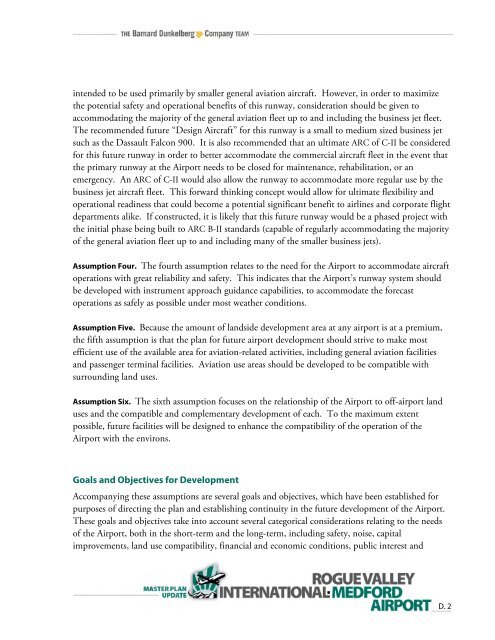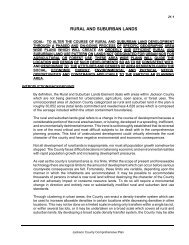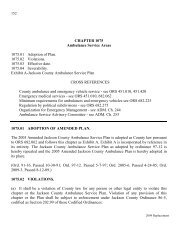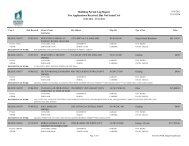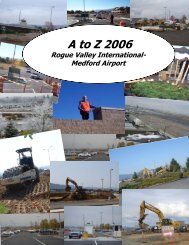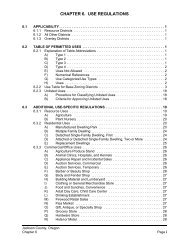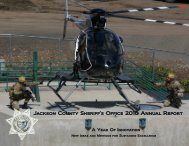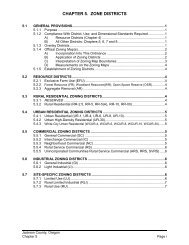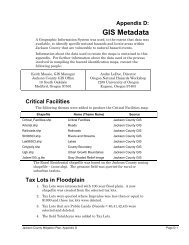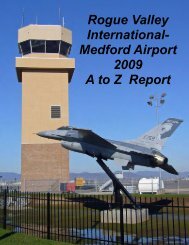rogue valley international medford airport - Jackson County Oregon
rogue valley international medford airport - Jackson County Oregon
rogue valley international medford airport - Jackson County Oregon
You also want an ePaper? Increase the reach of your titles
YUMPU automatically turns print PDFs into web optimized ePapers that Google loves.
intended to be used primarily by smaller general aviation aircraft. However, in order to maximize<br />
the potential safety and operational benefits of this runway, consideration should be given to<br />
accommodating the majority of the general aviation fleet up to and including the business jet fleet.<br />
The recommended future “Design Aircraft” for this runway is a small to medium sized business jet<br />
such as the Dassault Falcon 900. It is also recommended that an ultimate ARC of C-II be considered<br />
for this future runway in order to better accommodate the commercial aircraft fleet in the event that<br />
the primary runway at the Airport needs to be closed for maintenance, rehabilitation, or an<br />
emergency. An ARC of C-II would also allow the runway to accommodate more regular use by the<br />
business jet aircraft fleet. This forward thinking concept would allow for ultimate flexibility and<br />
operational readiness that could become a potential significant benefit to airlines and corporate flight<br />
departments alike. If constructed, it is likely that this future runway would be a phased project with<br />
the initial phase being built to ARC B-II standards (capable of regularly accommodating the majority<br />
of the general aviation fleet up to and including many of the smaller business jets).<br />
Assumption Four. The fourth assumption relates to the need for the Airport to accommodate aircraft<br />
operations with great reliability and safety. This indicates that the Airport’s runway system should<br />
be developed with instrument approach guidance capabilities, to accommodate the forecast<br />
operations as safely as possible under most weather conditions.<br />
Assumption Five. Because the amount of landside development area at any <strong>airport</strong> is at a premium,<br />
the fifth assumption is that the plan for future <strong>airport</strong> development should strive to make most<br />
efficient use of the available area for aviation-related activities, including general aviation facilities<br />
and passenger terminal facilities. Aviation use areas should be developed to be compatible with<br />
surrounding land uses.<br />
Assumption Six. The sixth assumption focuses on the relationship of the Airport to off-<strong>airport</strong> land<br />
uses and the compatible and complementary development of each. To the maximum extent<br />
possible, future facilities will be designed to enhance the compatibility of the operation of the<br />
Airport with the environs.<br />
Goals and Objectives for Development<br />
Accompanying these assumptions are several goals and objectives, which have been established for<br />
purposes of directing the plan and establishing continuity in the future development of the Airport.<br />
These goals and objectives take into account several categorical considerations relating to the needs<br />
of the Airport, both in the short-term and the long-term, including safety, noise, capital<br />
improvements, land use compatibility, financial and economic conditions, public interest and<br />
D. 2


